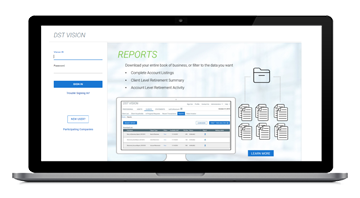What is asset-based lending?
The expansion of private credit since 2008 has led to increased demand for diversifying income strategies from investors and customized solutions from borrowers. Against this backdrop, asset-based lending has emerged as the fastest-growing segment of private credit, able to deliver a differentiated source of income. It does this through exposure to a wide range of underlying assets that have the potential to generate predictable cash flows, quality income, and diversify investors’ risk premia exposure. We explore asset-based lending in this article.

Asset-based lending is a type of financing that uses hard or financial assets as collateral for a loan. Hard assets may include aircraft, real estate, equipment, or shipping vessels, whereas financial assets may include royalties, intellectual property rights, or patents. As a rapidly expanding and often more complex segment, there’s typically less competition in asset-based lending compared with other areas of private credit. This benefits lenders with asset expertise through pricing power and greater control over structuring transactions and the ability to drive more favorable terms for investors. Moreover, providing a financing solution secured by an asset can give a lender the ability to underwrite collateral coverage more precisely, thereby providing the potential to enhance both returns and downside protection through the protection of principal.
How does asset-based lending work?
A core focus is to target asset-based private credit investments backed by pools of hard and financial assets across loans, leases, royalties, and receivables. Underlying assets can vary in value depending on quality, vintage, ability to generate cash flow, size, as well as the complexity of specific assets that are used as collateral. Different types of collateral pools can be combined to achieve a more resilient and less correlated investment profile across economic cycles with a key tenet being the ability to embed principal protection in the structure of a transaction. Nonbank financial institutions, such as asset managers, are typically sole lenders in a transaction. Compared with other generalist, income-oriented strategies within direct lending, asset-based lending requires extensive time and resources owing to the complexity of sourcing deals, structuring transactions, and the esoteric and niche nature of underlying assets.
Similar to other private credit strategies, asset-based lending is relationship driven where professional networks established over years are used to source transactions. Among other things, an asset-based lender is responsible for:
- Researching and sourcing opportunities across sectors
- Assessing and valuing assets suitable for use as collateral to secure a loan
- Formulating loan agreements and establishing appropriate covenants—terms placed on borrowers that form part of the loan agreement
- Ongoing hands-on asset management
- Assessing borrowers’ credit quality, capital needs, and associated requirements
Assets used for collateral may include
Hard assets |
Financial assets |
Residential or commercial real estate |
Intellectual property rights |
Equipment, large (machinery) and small ticket |
Royalty streams, including healthcare and music royalties |
Commercial aircraft |
Revenue and accounts receivable |
Shipping vessels |
Patents |
Benefits of asset-based lending
For investors, there are multiple potential benefits of incorporating asset-based lending into a diversified portfolio, which may include:
- Differentiated source of returns—Investors gain access to an alternative source of return through exposure to investments that are distinct from traditional fixed income and equity, which can diversify other private credit allocations.
- Higher potential yield—Due to the complexity of sourcing and structuring deals and transactions, a complexity premium affords investors the opportunity to realize a yield advantage over comparable public and private credit. Investors can expect further yield advantage through an illiquidity premium associated with this type of investment.
- Risk management—Asset-based loans are often senior in the capital structure, which provides a lower investment risk profile. As loans are secured by an asset (or assets), this provides additional risk mitigation.
- Potential inflation protection—Tangible assets typically increase in value as inflation rises, therefore potential asset appreciation benefits exist in higher inflationary environments.
- Customized terms—As asset-based lenders are typically sole lenders (not part of a syndicate), the ability to customize covenants and terms is high. This provides additional protection as risks can be identified, mitigated, and/or priced into a loan.
What are the risks of asset-based lending?
All investments carry some degree of risk. Within asset-based lending, key risks may include:
Limited liquidity
There are two aspects for investors to consider in relation to liquidity. At an asset level, some hard assets may not have a readily available sellers’ market, which could mean difficulty disposing of them in the event of a default. For this reason, the expertise of the manager in handling a workout situation is crucial. At a fund level, investors typically commit capital for the term of the loan—around three to five years. Asset-based lending is classified as a semi-liquid investment strategy in which investors need to be comfortable with committing capital for the term of a loan; however, loan terms are typically shorter in duration compared to middle market direct lending.
Default risk
Any type of lending carries the risk of a borrower defaulting on payments. In secured lending, default risk is managed through requiring a specific asset as collateral, which helps to lower overall risk. Additionally, asset-based loans are generally senior debt, therefore, investors have first priority repayment in the event of a default.
Concentration risk
Concentration risk is the risk of having exposure to one type of industry or sector. Diversification applies to asset-based lending in the same way that it applies to diversifying within equities and bonds. Exposure to a range of sectors, industries, and borrower profiles is important when considering an investment and investors can potentially benefit from a flexibility premium.
Choose wisely
Asset-based lending is a growing segment of the wider private credit market and is highly fragmented due to complexities that include sourcing, underwriting, and structuring transactions against esoteric or niche assets, as well as structuring loans and covenants that attract borrowers.
Traditionally, private credit and—as a subset, asset-based lending—have been the preserve of institutional investors. But it’s increasingly opening to a broader investor base through the introduction of semi-liquid investment vehicles such as interval funds and unlisted closed-end tender offer funds that allow for smaller investment allocations and provide access to noninstitutional investors. As an underrepresented strategy in many investors’ portfolios, asset-based lending is well positioned to capture an incrementally greater share of both the overall financing market and private credit allocations. However, partnering with the right market and cycle-tested asset manager is critical as experience within different industries, strength of origination networks, and depth and skill of an investment team make a significant difference in achieving successful investment outcomes.
Find out more about asset-based lending investment opportunities with John Hancock Investment Management.
Important disclosures
Important disclosures
The views expressed in this material are the views of the authors and are subject to change without notice at any time based on market and other factors. All information has been obtained from sources believed to be reliable, but accuracy is not guaranteed. This commentary is provided for informational purposes only and is not an endorsement of any security, mutual fund, sector, or index, and is not indicative of any John Hancock fund. Past performance does not guarantee future results.
Investing involves risks, including the potential loss of principal.
Diversification does not guarantee a profit or eliminate the risk of a loss.
MF2911949





